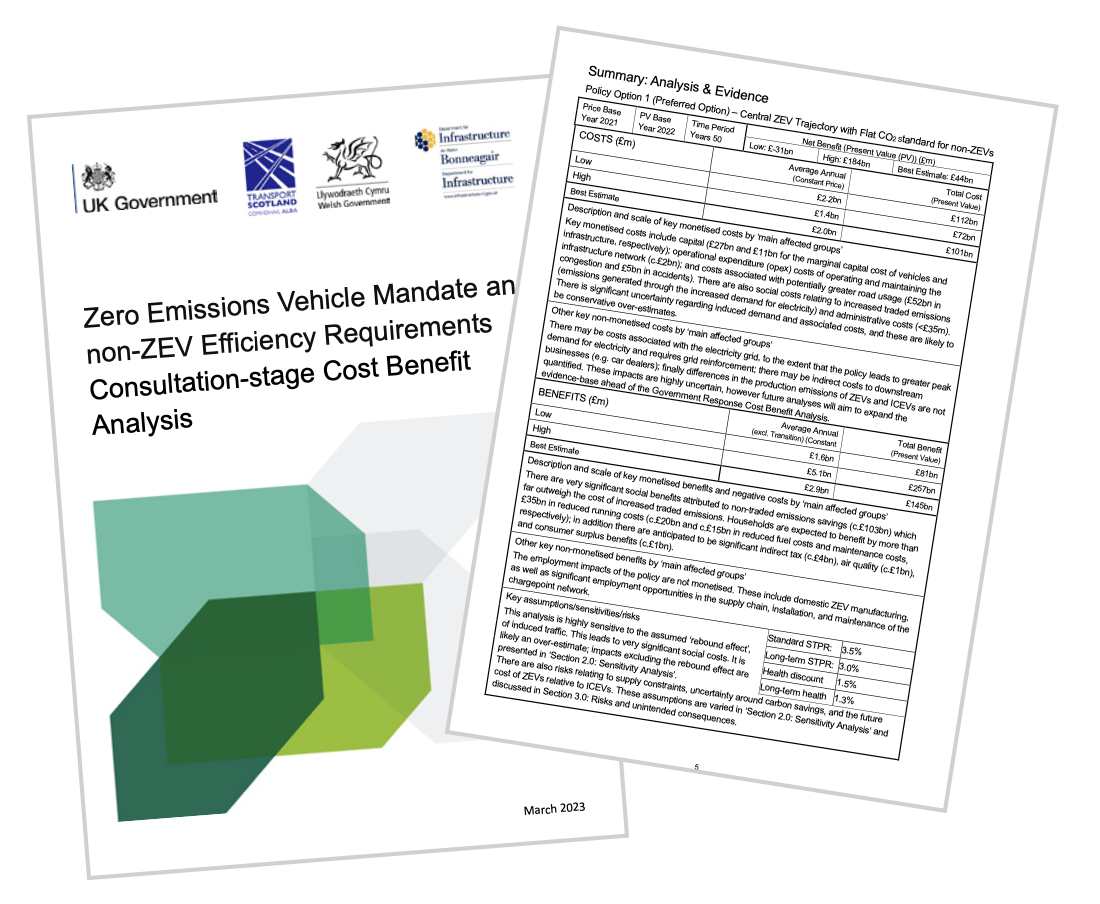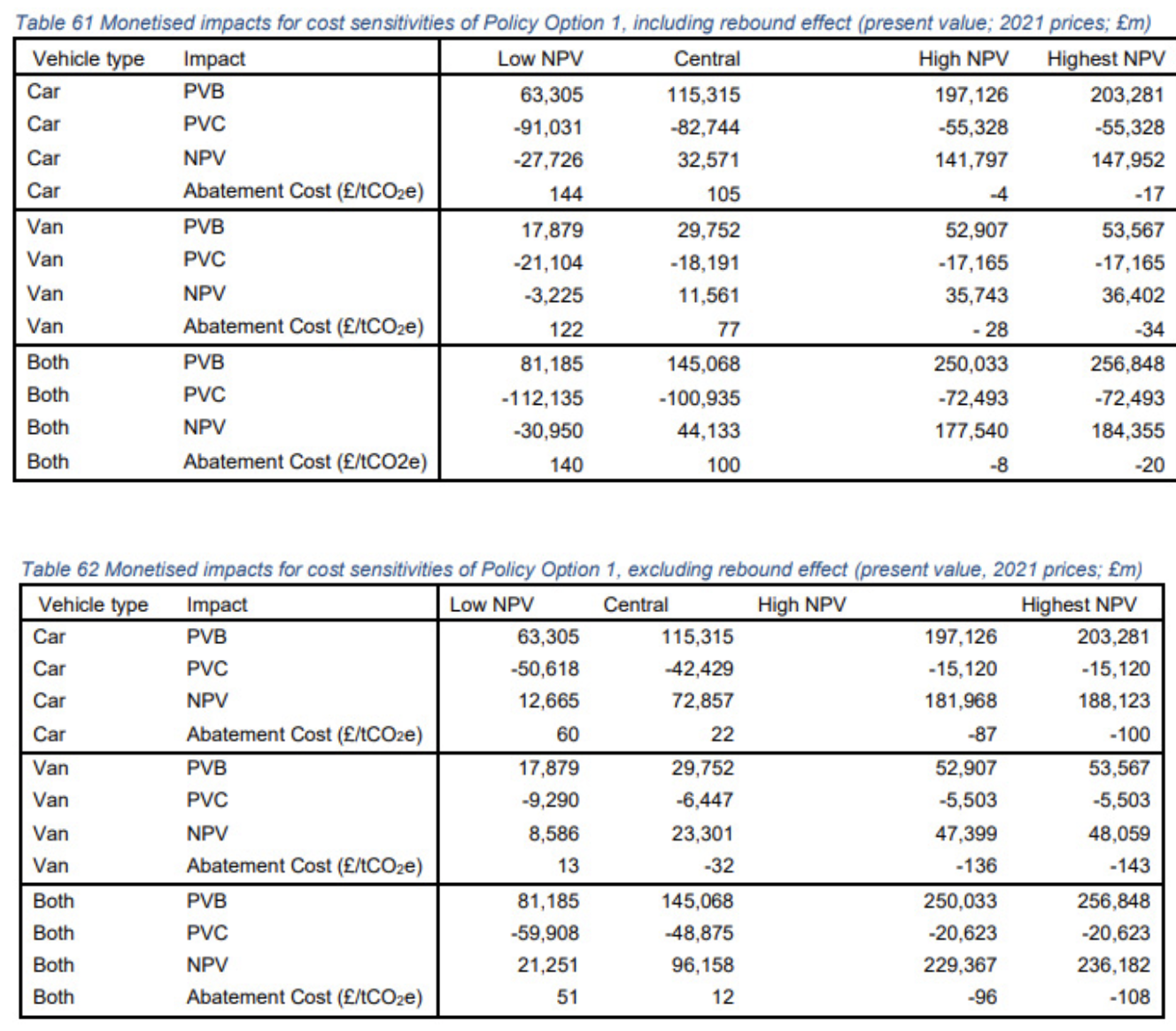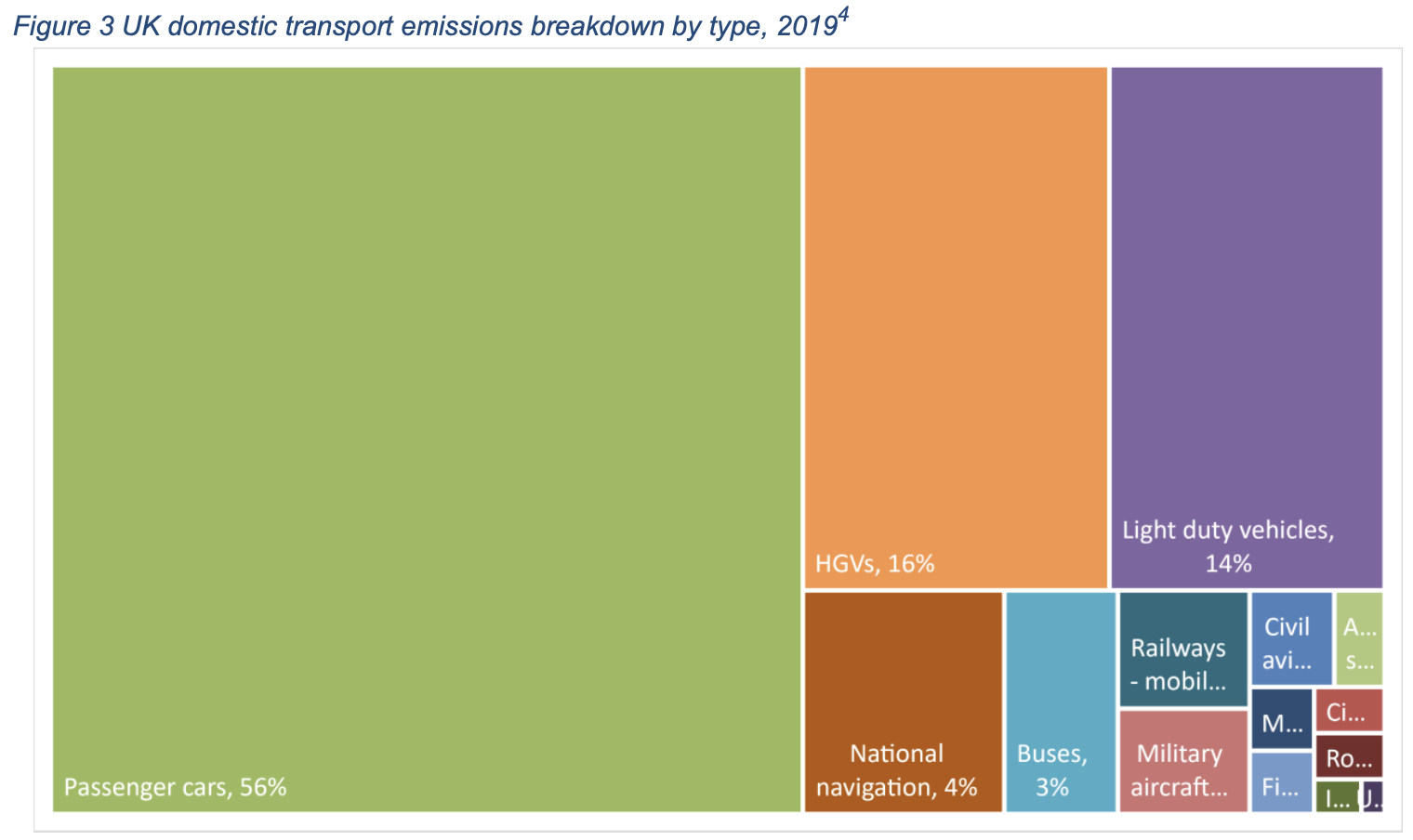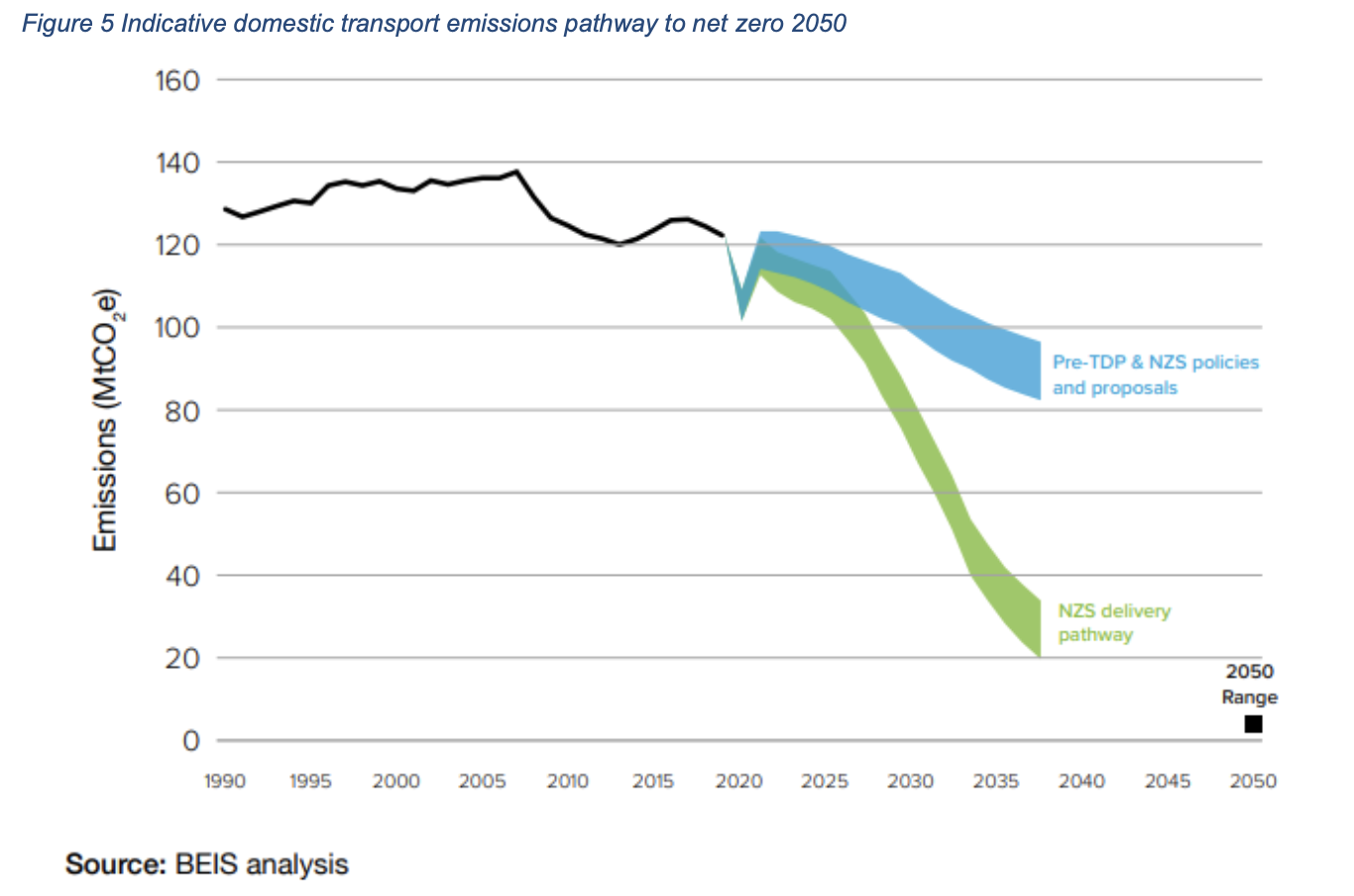TAPAS.network | 23 May 2023 | Commentary | David Metz
Bring back SACTRA – it is high time to open up the black box that drives transport policies, not shut down vital discussion

An increasing number of government transport policy documents and supporting technical papers are failing to properly provide for highly necessary discussions about uncertain forecasts and speculative outcomes concerning economic development, climate change and future travel patterns, says . Too much faith is being placed in the models, with too few challenges provided for decision-making frameworks on which everything relies, he warns, for which an independent view is essential.
A KEY FEATURE of current national transport policy discussions is the very important question of how investment in new road capacity, and the consequent expectations of continuing traffic growth, can be reconciled with the government’s legal commitments to achieve Net Zero greenhouse gas emissions by 2050, meeting the requirements of both the Climate Change Committee’s Sixth Carbon Budget, as agreed by the government, and the intentions of the Department for Transport’s own Transport Decarbonisation Plan.
Those looking for indications of how the Department will approach this balancing act have a number of recent documents to reflect upon, and I seek to examine one of those here – the switch to net zero vehicles – both in its own right, and for the important policy context it addresses. There are meanwhile significant implications of the modelling and scenario planning embodied in it, but too often seemingly inaccessible to all but a small group of specialists, and insufficiently subject to proper scrutiny.
Particular interest should be raised by the cost-benefit analysis the DfT has published in support of options to implement the Zero Emissions Vehicle Mandate, the legislative framework to fulfil the government’s objective to phase out the sale of internal combustion engine cars and vans by 2030 [ref 1]. This is a supporting document to a consultation document intended to finalise details of the phase out, essentially an opportunity for the car manufacturers to have a final input to the new rules [ref 2]. What is not clear is why the DfT has bothered to generate a 130-page report of a cost-benefit analysis, since no decisions seem to hinge on this. Perhaps the Treasury wanted assurance that the cost-effectiveness would be acceptable in comparison with other decarbonisation measures. Or perhaps the DfT economists wanted to parade their competences when cost-benefit analysis had failed to be supportive of decisions on a number of major road and rail investments.

The ZEV Mandate cost-benefit analysis includes modelling which assumes that the switch to ZEVs could result in increased mileage per ZEV driver because electricity as fuel is cheaper than petrol or diesel, which begs the question of whether some new charge for EVs might properly – and necessarily, as far as Government revenues are concerned – be introduced, as I have previously suggested (TAPAS 20 March 2023). This extra driving, a ‘rebound effect’, is supposed to lead to more congestion delays on the existing network, if not enhanced (or probably even if it is), with a very substantial cost impact: for a central sensitivity case of the preferred policy option, the abatement cost of the ZEV Mandate for cars and vans estimated as £12/tCO2e excluding the rebound effect, and £100/tCO2e including it [ref 1 Tables 61 and 62].

So, the DfT thinks it would be much more costly to reduce CO2 emissions by means of the Mandate if the lower operating cost of EVs led to greater distances travelled. However, in my view, rebound of the magnitude modelled is unlikely, quite apart from the possibility or probability of a road user charge for EVs. The per capita distance travelled by car depends on three main factors: speed of travel, time available for travel, and household car ownership. None of these are affected by the switch to electric propulsion. Vehicle operating costs have a second order impact at best, witness the growth of SUV ownership despite higher fuel use.
Paradoxically, the DfT modellers postulate additional traffic from reduced vehicle operating costs arising from electrification (mistakenly, in my view), while being in denial about the additional traffic arising from road users taking the benefit of investment in increased capacity as enhanced access involving more travel.
The ZEV Mandate cost-benefit analysis states that the preferred policy option is expected to achieve emission savings of 415 MtCO2e in the period 2020-2050 [ref 1 Table 29]. This is substantially less than the savings from the switch to electric propulsion of cars and vans of 620-850 MtCO2e projected in the Transport Decarbonisation Plan, mentioned above. No clear explanation for this discrepancy is given; it may be because the present Mandate is for the period to 2030, with a further Mandate promised for 2031-35; or it may reflect the sensitivity of model outputs to input assumptions.
More generally, modelling for the ZEV Mandate exemplifies how modelling outputs can be very sensitive to input assumptions that are made in the absence of firm evidence of future travel behaviour. This is a caution that must apply to most transport modelling, not least to the projections of transport sector carbon emissions to support decisions necessary to achieve reductions required by the legislative framework to achieve Net Zero.

Further dimensions of this opaqueness and, some may argue, obfuscation by the Department for Transport have come in the recently issued draft revised National Networks National Policy Statement (NNNPS) for consultation [ref 3], about which other LTT contributors have raised serious concerns (Glenn Lyons, ref 4) and into which The House of Commons Transport Committee has announced an inquiry. The purpose of such National Policy Statements is to provide guidance for decision-makers on the application of government policy when determining development consent for major infrastructure, and therefore forestall challenges about the appropriateness of any particular schemes. The intention is to remove the need for consideration of fundamental national policy questions at planning inquiries. Those subject to this guidance are the scheme promoters (National Highways for most road proposals), planning inspectors, and the Secretary of State when granting Development Consent Orders.
The proposed new NNNPS, which covers major investments on the road and rail networks in England, is intended to replace the version issued in 2015, before the government’s commitment to Net Zero and publication of the Transport Decarbonisation Plan.
The DfT states, incidentally, that the 2015 NNNPS shall continue to apply to projects already selected for public examination, so the new NNNPS will apply only to applications accepted after it is implemented, following the consultation. It therefore looks as though the Lower Thames Crossing tunnel, which has been accepted by the Planning Inspectorate for consideration, will be subject to the old guidance, despite construction being deferred by two years as announced in the recent Budget, which seems odd.
The draft new NNNPS opens by rolling the pitch, and to a significant extent pre-empting the debate, by stating that the government sees a compelling need for the development of national networks (para 3.22), such that there is a presumption in favour of granting Development Consent Orders (para 4.2), while at the same time asserting, at least, a recognition of the need to move away from a ‘predict and provide’ approach to catering for road traffic and thus determining the need for more roads (para 3.44). Nonetheless, there is seemingly an unwillingness to countenance any moves away from a belief that road provision and economic development are inextricably linked. This is very different, we might note, from the new approach of the Welsh government, which does not see a compelling need to develop its national road network for society’s overall economic well-being.
Whilst scheme proposals are to be supported by assessments of whole life carbon emissions, to ensure these are minimised as far as possible (para 5.29), the draft states that, in reaching a decision, the ‘Secretary of State should be content that the applicant has taken all reasonable steps to reduce the total greenhouse gas emissions from a whole life carbon perspective. However, given the important role national network infrastructure plays in supporting the process of economy-wide decarbonisation, the Secretary of State accepts that there are likely to be some residual emissions from construction of national network infrastructure’ (para 5.36). Moreover, the draft new NNNPS specifically contends that a net increase in operational greenhouse gas emissions [from more traffic] is not, of itself, reason to prohibit the consenting of national network projects or to impose more restrictions on them in the planning policy framework (para 5.37). So in policy terms, the line clearly being taken is that additional road capacity is more important than decarbonisation.
Importantly, though the application for development consent orders applies to individual schemes, it does not appear that these are expected to be each assessed for their climate change and carbon impacts. Nor is there apparent provision made for any requirement to estimate the impact on carbon emissions from an investment programme as a whole, such as the planned five-year Road Investment Strategy 3 (RIS3) due to start in 2026. The DfT seems content to continue without effective accountability, in line with present practice whereby National Highways argues that each individual scheme makes only a de minimis contribution to national carbon emissions, which can therefore be disregarded.
The DfT’s Transport Decarbonisation Plan did make broad-brush estimates of carbon reduction from policies and programmes, for instance 1-6 MtCO2e from increased active travel over the period 2020 to 2050, and 620-850 MtCO2e for electrification of cars and vans over the same period. It is surely then inconsistent not to recognise the offsetting carbon increases there will be from investment in new road capacity, likely to fall somewhere between the above ranges, and certainly not de minimis for the programme as a whole.
All this, I believe, leaves a very big hole in transport decision-making, with no obvious tools being developed to fill it, such as a method of modelling future carbon emissions arising from road investment. Transport models are complex and opaque, with many parameters, the value of which requires expert judgement. In consequence, there are two types of protagonist: experts who have a good working understanding of transport models because they earn their living from building and running such models; and non-experts, who are interested in the output of models, but are not able to understand the assumptions, simplifications and judgements that the experts must make. Non-experts include decision makers in national and local government who have prior expectations of the economic value of particular road schemes, and whose test of a good model is that it delivers outputs, comparing with- and without-investment cases, consistent with these expectations. Other non-experts are those opposing road schemes at public inquiries, who are faced with modelled outputs as part of the promoter’s proposal that are not open to detailed scrutiny, and indeed are to a significant extent ‘signed off’ by the overarching NNNPS. Inspectors at planning inquiries, being non-expert in this sense, have therefore to follow the NNNPS stated position.
The NNNPS requires projects to be supported by a local transport model, but planning inspectors and the Secretary of State do not need to be concerned with the national methodology and national assumptions around the key drivers of transport demand (para 4.7). In practice, most schemes on the Strategic Road Network employ local versions of a set generic traffic and economic models, typically SATURN for network traffic modelling, the outputs of which are inputs to the TUBA economic model. So, as it appears, consideration of the predictive validity of these models for projecting carbon emissions need not be considered either at a public inquiry or by the Secretary of State. One can understand why a planning inspector should not be burdened with a task for which they are not professionally trained, but ruling out any concern at the quality of the evidential case for a road, by simple reference to the NNNPS, looks a dangerous approach, especially in the absence of knowing where else in the decision-making process the validity of the supporting modelling might be assessed.
The need to assess the predictive validity of transport models is pointed up by the failure of standard models to project fairly short-run traffic flows in two cases of motorway widening, on the M25 and the M1, as I have recorded previously (TAPAS 14 June 2022). This does not increase confidence in the ability of such models to project either economic benefits or carbon emissions out to sixty years.

One particular problem of transport models is that they are largely used to justify new investment, in which context the saving of travel time is supposed to be the main economic benefit. Yet average travel time, as estimated by the National Travel Survey, has changed very little over fifty years, excepting the period of the coronavirus pandemic. The implication is that people take the benefit of faster travel as enhanced access to desired destinations, people, places, activities and services, for the opportunities and choices on offer. Travelling further, rather than using travel time savings for more productive work or agreeable leisure, means more externalities related to vehicle-miles travelled, carbon emissions in particular.
Modellers who aimed to model such access benefits, and the resulting changes in land use and value, would not be appreciated by the economists who are wedded to travel time saving as the main economic benefit of investment, nor by decision-makers who are better used to conventional economic investment appraisal. So modellers must fix their assumptions, simplifications and parameters to get outcomes that satisfy a ‘realism test’ of prior expectations, subject to conformity with unspecified standards of professional respectability.
My concern is that the upshot will be that the modelling of the impact of new road investments will henceforth systematically underestimate carbon emissions from the additional (induced) traffic. This makes it easier to appear to theoretically comply with the pathway to Net Zero, but means that the outcome is likely to fall short of that pathway.
This is not the first time we have been in a situation in which there have been real doubts about approaches to transport economic analysis endorsed by the DfT. More than a quarter of a century ago it was accepted there should be an independent opportunity provided for some external critical review, and good work was done on such matters by SACTRA – the Standing Advisory Committee on Trunk Road Assessment. This was an independent body created by the DfT, that issued two carefully argued and influential reports in the 1990s. One confirmed the importance of induced traffic arising from new road construction, a view that had been resisted by the DfT since such traffic added to network congestion and reduced travel time savings. The other report recognised the wider economic impacts of investment, beyond the conventional time saving, vehicle operating costs and those externalities to which monetary values could be attached; estimation of such wider impacts, such as agglomeration effects, now forms part of the standard approach to investment appraisal.
Although SACTRA, by its very name, was intended to remain in existence as a ‘standing body’, at least until formally stood down, it seems to have fallen into that state by not receiving new commissions. There is an urgent need now, in my view, to reconstitute it, or some similar body of independent experts, to look at the suitability of the current body of official guidance on transport economic analysis and modelling in an era when decarbonisation is a national policy priority. As it is, however, the people in DfT and their consultants, who naturally wish to please their clients, are talking to each other in an echo chamber of implied confidence in the current process, from which interested outsiders are excluded.
Other departments do better. The Treasury’s model of the UK economy has long been available to independent forecasters. The Energy Department collaborates with academic energy modellers and makes available the online Mackay Carbon Calculator that allows users to explore the options for reducing carbon emissions. Modelling of the coronavirus pandemic was largely carried out collaboratively by academic groups whose models and outputs were public for all to debate. And the modelling of climate change itself is carried out openly, collaboratively and internationally as input to the reports of the Intergovernmental Panel on Climate Change.
A couple of years ago the DfT instigated a move to update the National Transport Model to generate a new version, NTMV5, intended to be open to other users, but this seems not to have worked out in that the National Road Traffic Projections 2022 employed the previous version (TAPAS 24 January 2023). The DfT should explain what went wrong, and should engage openly with those beyond the Department and its immediate advisers on how best to model the decarbonisation of the transport sector, and be open to genuine independent outside critique.
References and Links
David Metz is an honorary professor in the Centre for Transport Studies, University College London, where his research focuses on how demographic, behavioural and technological factors influence travel demand. He spent part of his career as a senior civil servant in a number of UK government departments, both as policy advisor and scientist, including five years as Chief Scientist at the Department of Transport. www.drivingchange.org.uk
This article was first published in LTT magazine, LTT869, 23 May 2023.
You are currently viewing this page as TAPAS Taster user.
To read and make comments on this article you need to register for free as TAPAS Select user and log in.

Log in